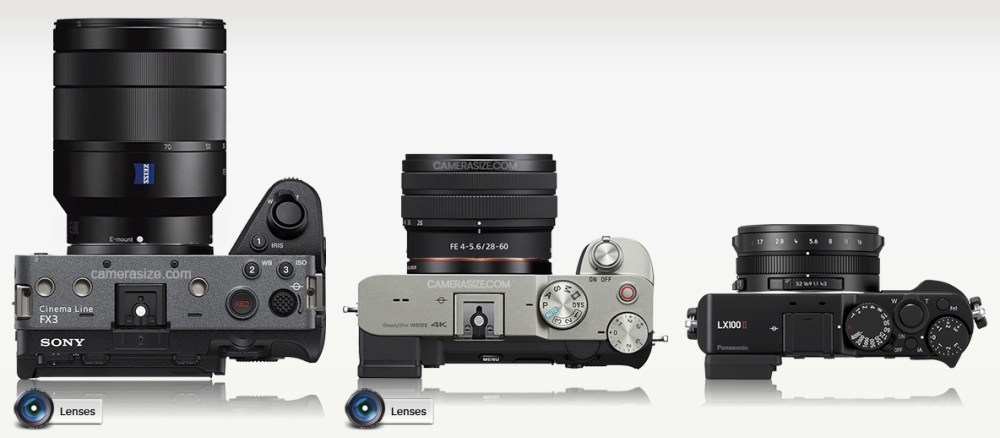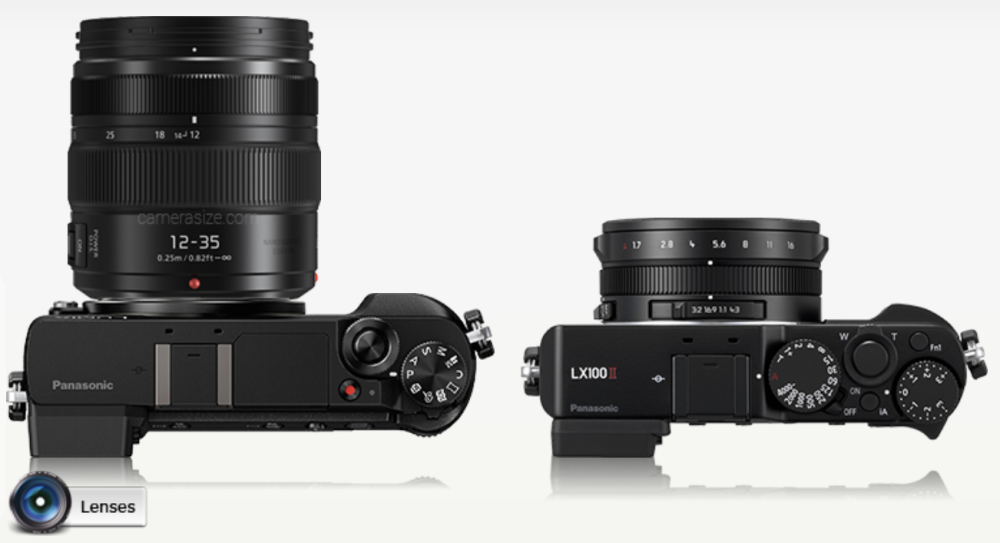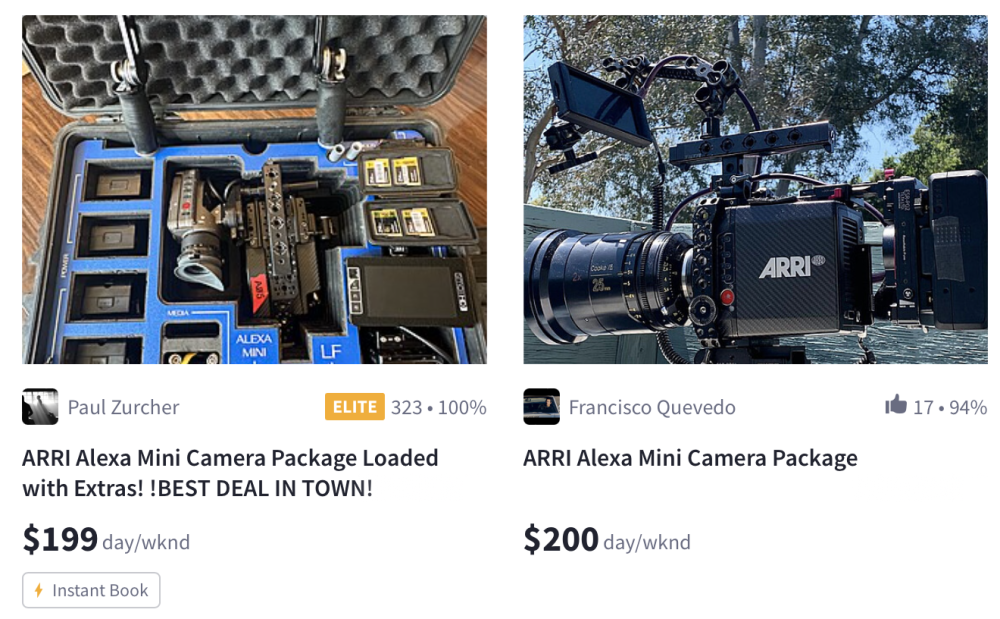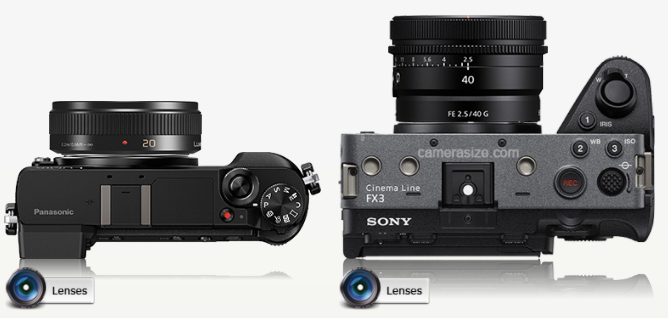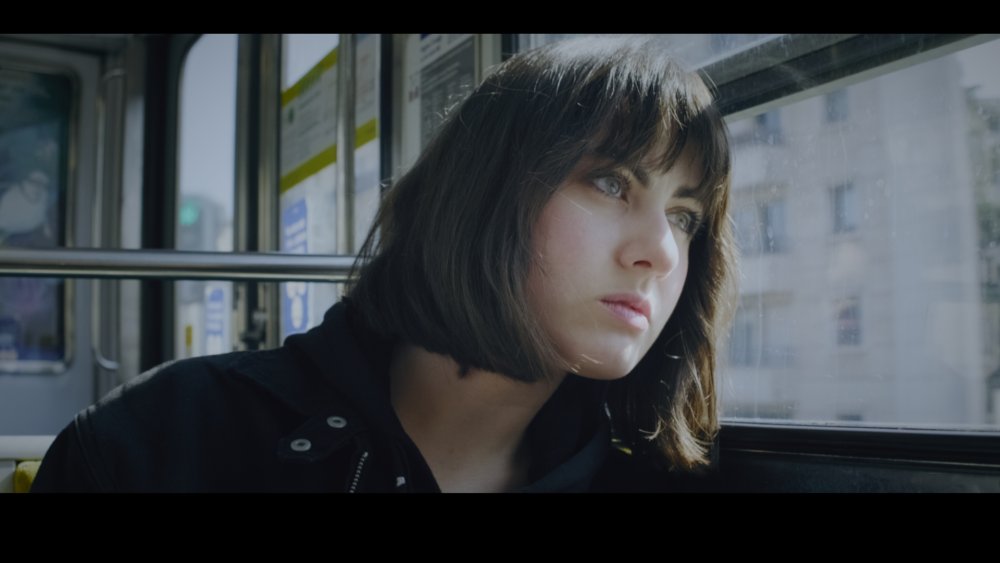-
Posts
7,992 -
Joined
-
Last visited
Content Type
Profiles
Forums
Articles
Everything posted by kye
-
I always say, if you don't know what the solution to a problem is, then you don't understand it sufficiently. In this case, you seem to understand your two identified options relatively well, so the final piece is understanding your own needs. How do you shoot? Where do you shoot? What do you shoot? What lenses will you need? What other equipment will you need? What does the whole workflow look like? All cameras at this level look great, this shouldn't be your focus - you should be focusing on the camera that is easiest for you to shoot where and how you shoot to get better shots by being supported by the entire ecosystem that you're buying into.
-
Two things are needed - the gamma and the colour space. These are normally referred to in casual discussions as being only one thing, but they are completely independent and one cannot be inferred from the other. DJI should also publish the spec for their profiles too. Hopefully the release of Apple Log and subsequent inclusion in the ACES and RCM ecosystem will inspire the other manufacturers to also start publishing their profiles. Unfortunately, I don't think this is likely to be the case for all manufacturers, as some of the standards are not pretty and the standards documentation would point out those flaws quite explicitly.
-
A published technical specification that would allow it to be integrated into ACES RCM etc.
-
Because you have to pay to shoot anything other than UHD 24p.
-
If you're talking video then "massive ability to crop" wouldn't be how I'd describe it. You're also correct that you can swap the lens for anything you'd like, but the non-abbreviated quote is more like "anything you'd like, as long as it's enormous in comparison". Here's the FX3 with 24-70mm F4, the A7C with the 28-60mm F3.5-5.6 and the LX100:
-
Apparently there was a BTS video that Apple made, but since took down, that showed a bunch of stuff about how it was shot, including that they edited it on Premier Pro and graded in Resolve. Here's an analysis video, linked to the relevant section: I don't know what PP looks like - is that it? It would be strange if they used PP instead of FCPX...
-
What do you feel is the advantage of the LX over something like the GX range? Is it the size? It definitely is much smaller with a roughly equivalent lens (even though I suspect the LX100 lens would extend once turned on)!
-
Of course, there is a third option beyond smartphone and normal camera. That option would be to leverage its existing tech but compromise on the thickness of the device, and include multiple cameras with various different focal lengths, light the Light L16 did. (The L16 tried to stitch the camera images together, which didn't work well, and isn't what I'd recommend. But it did show that you can get 16 smartphone sized camera modules into something very compact, with potentially spectacular dust and water-proofing.) As we saw from the Venice video I posted yesterday, the main camera is broadly a good option but the other cameras tend to suffer significantly from lack of light. If they had extra thickness they could use the same size of sensor for all the cameras, and combine it with faster lenses. There are F1.4 smartphones out there, but we all know that lenses can be built much faster than that. Imagine a device that's sized like a large smartphone but with the thickness of a modern camera body without the lens, and has an array of cameras including 16mm FOV, 24mm FOV, 50mm FOV, 100mm FOV, and 250mm FOV, all capable of 8K60, and all at F0.8. Shooting all resolutions and flavours of Prores in Apple Log of course. If Apple made a dedicated camera, it would have to be completely superior to their flagship phones, and would also have to appeal to the masses who want improved imaging and are willing to pay for it, BUT would have to fit the Apple philosophy of being elegant and simple to use. I don't think an FX3-ish or Alexa-ish device with Apple written on the front would do that.
-
A proper LOG implementation would be even better. That way it could be graded properly using colour management. Now that Apple have shown what is possible with Apple Log, there's no denying that it's possible.
-
Ah, that makes sense. Considering the tens of thousands of complains that we have against all cameras ever released, it makes sense not to put the camera anywhere near the image!
-
Not so good for filming in uncontrolled lighting then. Unfortunately, that's basically ALL that the iPhone gets used for!
-
Moire can be caused at many points in the process. You are talking about moire being caused by the camera not downscaling the image from the entire sensor, which is what is happening in the 1080p example of the A6600. This happens. What also happens, and what I have been trying to explain, is that it can also occur as a function of the native sensor resolution and the real world, which means that the patterns of light that the sensor detects will have moire in them, and it won't matter what happens after that - no amount of good processing can fix it. The cure for this is some kind of optical mechanism to spread the light between the photosites. This could be an OLPF, clever design of the micro-lenses, combination of these, or other things as well. This is why people keep talking about AI - it's the only way that moire could be fixed after being captured.
-
Like every production with a real budget ever. Alexa Mini camera packages are around from $200 a day... on any set whatsoever that's less significant than the catering budget, the fuel budget, etc and absolutely dwarfed by even the vehicle rental budget. It's why there's precious little great-looking footage from all these mirrorless cameras - if you were going to go all the trouble of making a real film then why would you skimp on a camera package? It makes no sense. My sister and I shot a short film in the late 90s when she was in film school, it was self-funded for $2000. We borrowed everything and our largest cost was catering (feed people well and they'll be happy). It was a 5 minute final film, we had 20 people on set, and my estimate was that in total it had thousands of person-hours put into it, including pre and post. Even if everyone gets paid minimum wage, the camera rental cost is inconsequential.
-
In those modes the sensors resolution is higher and the chart doesn't have fine enough lines to create moire. It does indicate that the Sony isn't using the full sensor resolution in its 1080p mode though. This isn't a surprise, the GH5 employs full readouts and high quality image scaling internally, whereas inferior cameras don't.
-
Addendum to the above. I think the shots that suffer the most are the ones with the non-main cameras. I know on my iPhone 12 Mini that the main camera has the noise performance of the GH5 in identical conditions with an F2.8 lens on it, but the wide camera on the iPhone has the same noise as the GH5 in the same conditions but at F8... that's 3 stops worse performance.
-
This seems like a very useful video.. obviously shot in the real world, in 4K60 Apple LOG with an ND and the BM Camera App which offers the manual controls. Some shots are very clean and with nice colours, others seem a little off, some shots are noisy even though there should be lots of light, etc.. Lots of shots look like a smartphone, unsurprisingly. My take-away is that Apple LOG is great and the results look stunning, but it's very fragile and everything in the situation has to be favourable otherwise it starts looking bad quite quickly.
-
The 6600 does not have an OLPF, and the moire is present the moment the light is collected on the sensor. Once that happens there's nothing you can really do to get rid of it.
-
Size will be the problem... These are both 40mm FOVs. Sure, the MFT is 20mm F1.7, which is about one stop deeper DoF but that's the slowest 40mm prime Sony make. I actually don't care about the sensor size anymore, the FX3 is quite a small camera, the issue is that the lenses just aren't. It might be big enough, assuming you can position it as anything other than a FF camera with a lens glued on the front that you can't change. It has to be seen as a creative limitation, as something MORE elegant and creative, rather than just limiting. I've seen people talk about cameras like the Leicas like that, and the Ricoh ones too, but I'm not sure that companies like Sony could pull off that kind of perception shift.
-
-
-
Cool image, it grades really nicely. I went... a bit further with it. I decided to give it a more retro film blockbuster look.
-
Yeah, I don't need the flash, but without an audio input I also don't have a use for the hotshoe. Of course, if they made a compact shotgun mic that used the hotshoe that would be spectacular! The current sensor/processor can do 4K24/30 100Mbps and 1080p30/60 (20Mbps/28Mbps). If they went with a newer sensor/processor then I can imagine it would be possible to support at least 4K24/30 and 1080p24/30/48/60 at a range of bitrates. I'd like to see 4K at 200Mbps and 1080p at 50/100Mbps. Currently if you record 60p at 28Mbps and conform it to 24p it's only 11.2Mbps - good luck suggesting that's adequate for anything in todays world. 48p is a mode that is very premium and only available on the highest-end cameras, which is sad. Being able to shoot 48p with 360 degree shutter gives a super-smooth-looking 360-shutter 50% slow-motion footage, or completely standard 180-shutter 24p normal speed footage, and you get to decide which in post, rather than when you hit record. Tor the target market the ergonomics are spectacular. Here's a comparison: Smartphone - open camera app, hit record. Point-and-shoot: Did I leave it in the car? Why is the battery flat? Honey, I thought you charged it last time? I thought you were bringing it. You said you had it. You ALWAYS do this..... Wasn't that the fixed-lens compact camera market? That was my recollection. Maybe I'm mis-remembering it though. Let's hope not!!
-
I don't know - there's loads of standards that are supported and everyone opts into. It doesn't even have to be everyone using the same standard - we don't have one LOG standard that everyone shares, but they've all specified the technical data to be able to transform each LOG into each other. If we get tools that can read each manufacturers different gyro data standards then that will do nicely and who cares as long as we can utilise things in post.
-
It was graded like a feature film, that's why it's so dark. Here's a still from the video: Here's a still from one of the Bourne movies, shot on film: The iPhone one is a little darker in the highlights, but it's also overcast, whereas the Bourne image is in full sun on white buildings, so that makes sense. The iPhone one has a little less contrast too, which is partly appropriate due to the weather, but also likely to simply be that in modern times people seem to be afraid of contrast. People all over the internet are using the phrase "cinematic" willy-nilly but seem to have lost contact with reality in terms of what movies actually look like - most "cinematic" content looks more like video than a dad with a handcam. It seems to still have a video look - it's something about the motion that I can't put my finger on. I've been sensing this for almost a year now with various footage from a range of different cameras, but haven't worked out what it is. I might have to step things up and actively start chasing it.
-
I have a strange relationship with the GX85, now that I've gotten sufficiently good at colour grading - I don't feel limited by it. Of course, if they were to increase the DR, improve low-light performance, add 10-bit, etc etc, then I'd be happy, but I'm not chafing at the bit for those things. What I wouldn't mind though, is having a log profile. And not a "V-Log L" style unsupported thing, I mean a real log profile that's supported with professional specifications. Apple did it with a phone, so there's no excuses now. They might need to add 10-bit for that, but so be it. There is quite a bit of info about Panasonics future plans. For example, this says that Panasonic has registered two new cameras, likely on higher end and one lower end: https://www.43rumors.com/panasonic-officially-registered-another-new-model-in-china-we-now-have-two-cameras-coming-soon/ This article from France suggests that they're selling well there, that although the compact camera market was crushed by covid, their sales are increasing due to competitors leaving the market segment, and that expert users prefer compact cameras with interchangeable lenses instead of expert compacts: https://phototrend-fr.translate.goog/2023/10/interview-panasonic-salon-de-la-photo-2023/?_x_tr_sl=auto&_x_tr_tl=en&_x_tr_hl=en&_x_tr_pto=wapp That's all hedging-our-bets marketing-speak of course, but it sounds to me like Panasonic might be keeping its eye on the compact market segment with the view to having a large share of a relatively small market. We all know that smartphones ate the point-and-shoot fixed lens market, but interchangeable lens cameras will always have a huge advantage over smartphones in this regard, so I think there will always be demand of some sort. The Resolve v18.1 manual is 4036 pages. They're up to 18.6 so I'd say that one is longer still.




